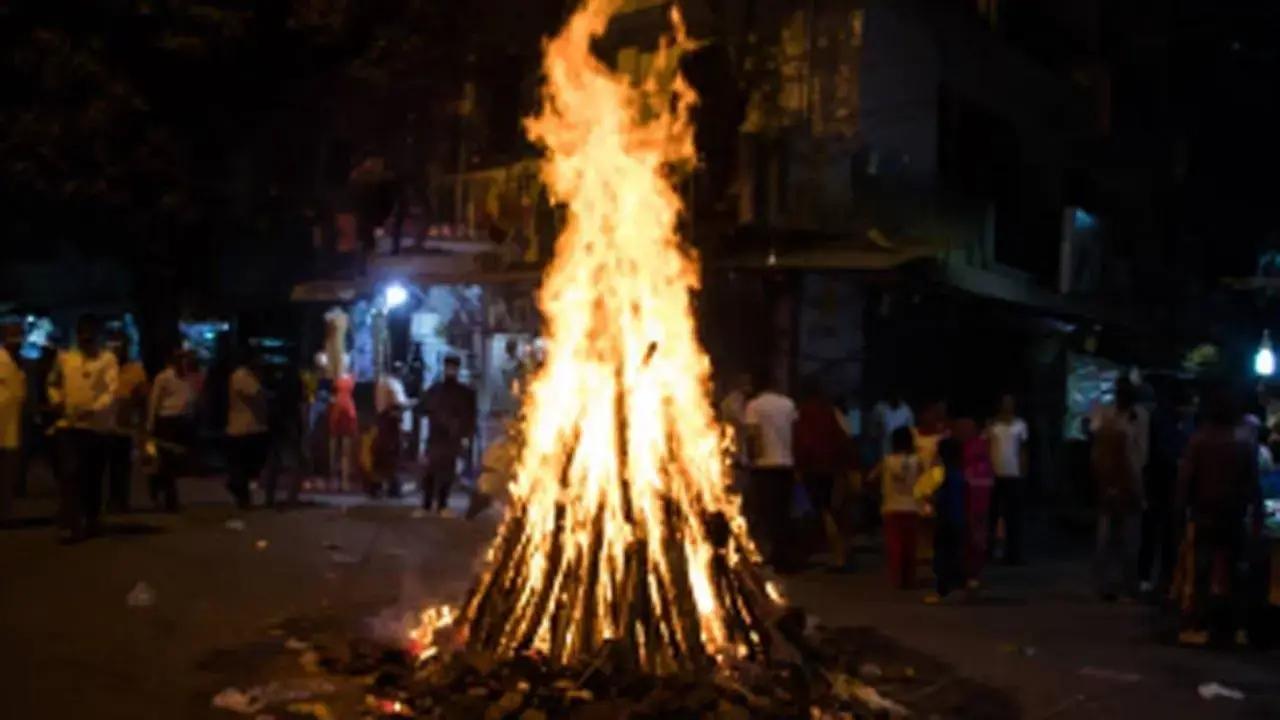Holika Dahan, also known as Choti Holi, is a popular Hindu celebration celebrated throughout India. On Holika Dahan here's the history and significance of the festival

Representational Pic
Holika Dahan, also known as Choti Holi, is a popular Hindu celebration celebrated throughout India. It celebrates the victory of good over evil and the start of spring. The communities around India prepare to celebrate Holi, one of the most lively and cheerful days on the Hindu calendar.
The Holika Dahan ritual takes center stage, providing a profound peek into the festival's rich tapestry of cultural and religious legacy.
Amidst the celebration of the festival of colours, it is vital to delve into the history and significance of Holika Dahan.
Holika Dahan marks the eve of the main Holi festival and is observed with great reverence and fervor by millions of people across the country.
The ritual involves the lighting of bonfires, known as 'Holika pyres,' in public spaces, neighborhoods, and households, where families gather to perform ceremonial rites and offer prayers to the divine.
The significance of Holika Dahan is deeply embedded in Hindu folklore. According to legend, the event commemorates Prahlad, a Lord Vishnu devotee, who defeated the evil Holika. Holika, the sister of the demon king Hiranyakashipu, had received a benediction from Lord Brahma to safeguard her from fire. However, when she attempted to kill Prahlad by sitting with him in a burning fire, Prahlad survived unharmed thanks to his unwavering faith in Lord Vishnu, while Holika died in the fire.
The festival of Holika Dahan symbolizes the triumph of righteousness and devotion over evil and deceit.
Beyond its mythological origins, Holika Dahan holds deeper spiritual significance, representing the purification of the soul and the renewal of life. The act of lighting the bonfire is believed to symbolize the burning away of impurities, negativity, and ill fortune, paving the way for a fresh start and a brighter future.
Holika Dahan celebrations differ by area in India, each with its unique set of customs and ceremonies. In some regions of the country, effigies of Holika are created and burned alongside the bonfire, while others do parikrama (circumambulation) around the pyre.
Holika Dahan, the tradition fosters a sense of unity, camaraderie, and collective celebration, transcending boundaries of caste, creed, and social status. It is a time for families to bond, for communities to rejoice, and for individuals to reflect on the timeless teachings embedded within the fabric of Hindu mythology.
 Subscribe today by clicking the link and stay updated with the latest news!" Click here!
Subscribe today by clicking the link and stay updated with the latest news!" Click here!










